1674
Unsuitable for living space
It is considered that the necessary conditions for the emergence of life is the presence of light, oxygen and water - at least, with the majority of species of living beings on our planet is the case.
But the Earth - an amazing place, and life here sometimes there is a completely unimaginable conditions that reassuring: it is possible, someday we'll find life on other planets, where the conditions are not as favorable.
We hope that on this we will be able to tell you in a few years, and now we offer you a selection of the most extraordinary places on our planet, where he managed to emerge and survive living organisms.

1. Asphalt Lake
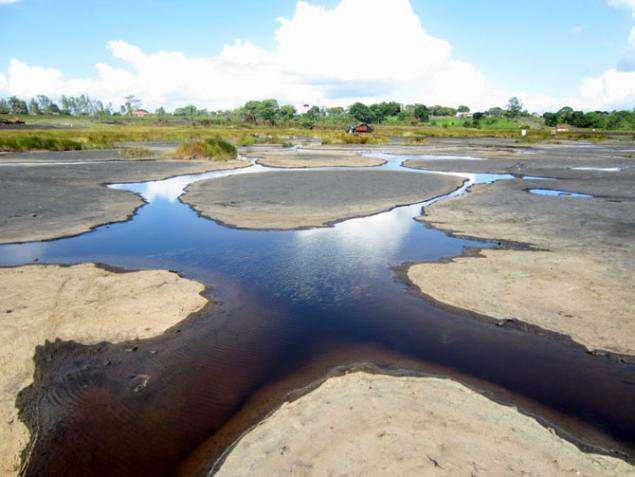
In the Atlantic, there is an island of Trinidad, it is unusual primarily to the fact that it is the only lake in the world, in which instead of water - liquid asphalt. Locals use the lake for their needs: every year there is produced about 100 tons of asphalt, and the lake becomes smaller - the depth of the basin is also unknown. The reasons for the origin of the mysterious natural phenomenon can only guess.

However, the most surprising - not even that. In a completely uninhabitable conditions inhabit tiny bacteria extremophiles: each gram of substance lake live about 10 million individuals. Note that the temperature of the asphalt - about 50 ° C, water is considered a prerequisite for the emergence of life, there is almost no a meager amount which is still to be found, is produced directly lacustrine inhabitants. In addition, the bacteria have to live in an oxygen-free environment - instead they use for breathing metals and hydrocarbons.
2. Radioactive water

Bacteria of Deinococcus radiodurans can withstand ionizing radiation about 10 000 Gy (five persons in obtaining Gray dies). Moreover, these bacteria prefer to live in those places where one way or another, the presence of radiation - in natural waters, containing huge amounts of radioactive substances such as radium, radon or uranium. Deinococcus radiodurans survive through continuous copying their DNA to the time the light destroys one gene, another similar molecule is already beginning to work, and the creature continues to live. In fact one individual can exist almost forever, constantly updating itself.
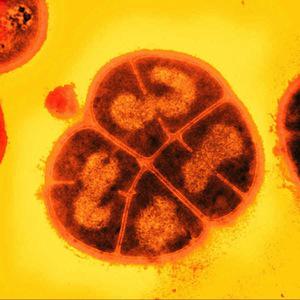
Now researchers are looking for ways to beneficial use bacteria to human needs: for bacteria, in fact, eat radioactive waste, they can be used for bioremediation of radioactive contamination. Moreover, after the nuclear disaster bacteria survive for obvious reasons, so that it could serve as an information carrier for the remainder of mankind. By the way, this experiment has been performed and was successful: in 2003, scientists have encoded the song in a number of segments of DNA and introduced them to the bacteria - information exactly conveys a hundred generations of bacteria, and scientists have been able to read it.
3. The bottom of the ocean

Deep water, where can not get no ray of light, too, there is life, with this life is represented not only by bacteria, as in the two previous cases. At the bottom of the ocean inhabited by amoebas and strange deep sea fish - they somehow manage to survive in the face of incredible pressure and the almost complete absence of oxygen. However, there is a theory that life at great depths is not born, but rather migrated here - some species did not survive the competition and were forced to sink to the bottom in search of a new habitat. However, this does not explain the existence of living organisms, for example, in the Mariana Trench: quite difficult to assume that some kind of looking for a place to live down to "on their own" to such a depth. Back in 1960, two researchers, Jacques Piccard and Don Walsh, were able to see at a depth of 10,000 meters flat, similar to flounder fish, and James Cameron in 2012, the year even managed to bring to the surface of microorganisms "Challenger Deep". Note that at great depths was not found even a single species, the age of which would be less than 200 million years, and scientists believe that since they have not changed.

In general, deep-residents - scavengers, eating all organic matter, which falls on the depth of the "top».
4. Dead Sea

The Dead Sea - one of the most saline water bodies on the planet: according to studies, the salinity of the water in it is 35%, the composition is preferably magnesium chloride, calcium, sodium and potassium. Unfortunately, as a result of environmental degradation, groundwater abstraction and climate change on the planet Dead Sea is gradually drying, and possibly disappear altogether in the present century. And with it will disappear and inhabiting his living organisms that are unique in nature.

Halophiles
In the Dead Sea halophilic microbes inhabit - salinity of the water in no way does not prevent them to live and breed in a seemingly quite suitable for this environment, on the other hand, the higher the salinity, the better they grow. These microbes - very resistant organisms: in fact, they could withstand the extremely low temperatures, or even to stay alive in the vacuum of space due to its ability to osmoregulation.
5. Boiling water
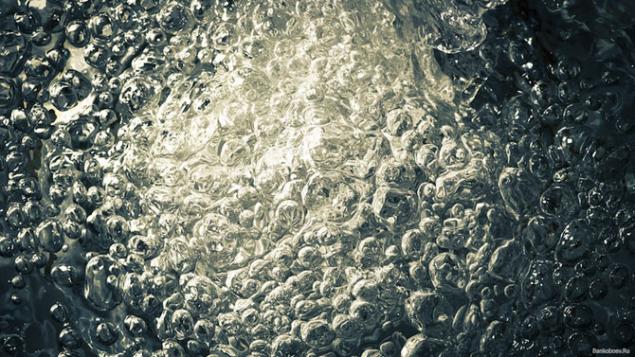
Ponds, where the water temperature is close to 100 ° C, is not so rare on our planet: in particular, geothermal sources exist in the Caribbean Sea at a depth of 5000 m, and the water temperature is close to 400 ° C - is the deepest boiling springs in the world. None of terrestrial organisms survive in such conditions can not, however bacteria, some species of molluscs and polychaetes perfectly adapted to life in boiling water.

Worms, for example, do not have a mouth or intestine, and life energy they receive does not result in the absorption of food, thanks to the processing of hydrogen sulfide. Their bodies are protected from possible adverse effects of ultra-high temperatures chitinous shell. Surprisingly, if the water for some reason or cools colony polychaete leaves usual habitat area, then they cease to proliferate and die after a while. In the "ideal" conditions as they live a long time - the researchers could find individuals older than 250 years.
6. Ice
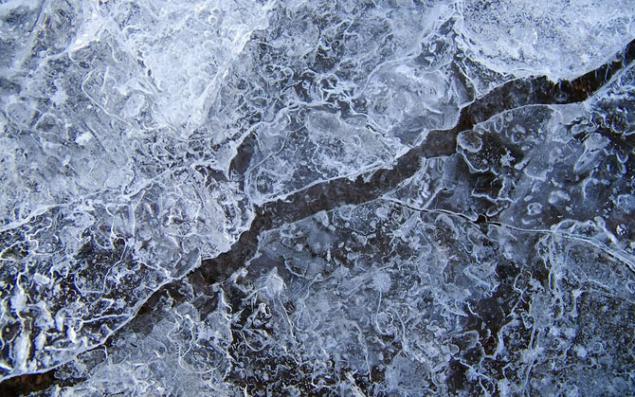
Strictly speaking, the results in the ice is not quite living organisms - are necessary for their life processes "frozen" in the literal and figurative sense. In particular, in the ice of Antarctica found ancient bacteria that inhabit them directly in the ice - glaciers and icebergs: if an iceberg drifting in the ocean, then it drift and bacteria inhabit it.
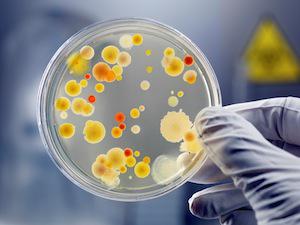
Once a block of ice with such bacteria was able to deliver to the laboratory. After defrosting bacteria almost immediately began to move, began to breed and find food: that they were in a state of suspended animation, perhaps a million years did not cause them any harm. The researchers concluded that this is possible thanks to the genome of ancient organisms: it was shorter and more primitive genome of modern bacteria - they have only 210 base pairs, while other bacteria usually there are three million pairs.
7. Dry Valleys of Antarctica

Living organisms, dormant in the ice - not the only mystery of Antarctica: on the southern continent, there are dry fields, also known as "Martian valleys." Dry field can rightly be called the driest place on Earth, because there was no rain for two Ma, the temperature does not rise above -20 ° C, and the normal wind speed - 300 km / h. Accordingly, the soil of the valleys are not covered by any ice or snow.
Until recently it was believed that to survive in such conditions is impossible: there is at least some water - no life. However, in 2009, the year in the dry valleys of the soil samples were taken, which were found living organisms - bacteria. There is a hypothesis that they were there with the last drop out of the rain and the ground adapted to live in the soil, without the need for oxygen or light and ignoring the cold, but it is not known what they eat and how the mind was able to survive for such a long time.
8. Groundwater depth

Humanity is driven by economic and research interests have long been seeking to conquer the bowels of the earth. Most people try to penetrate the depth of almost unattainable for mining, for example, in the vicinity of Johannesburg is the deepest in the world Mponeng gold mine, its depth - over 3,500 m. The temperature in the bowels of the earth, of course, is much higher than in the hospitable surface - about 60 ° C. There is no light and almost no air, but is it the eighth paragraph to surprise someone? Of course, life is here.
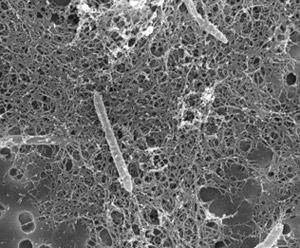
Living underground bacteria as a source of livelihood using nuclear reaction due to radioactive rays, water molecules are split into hydrogen and oxygen, then atomic hydrogen is recovered and highlighted as a result of this process, the bacteria use the energy for life. They live mainly in the tiny amount of moisture in the cracks of rocks.
9. Toxic sludge

In the Mediterranean, most of the bottom is covered with yellow and blue carbonate mud, which is saturated with hydrogen sulfide and toxic to all living things. Oxygen in such an environment is not and can not be, the light does not penetrate there. People without special equipment and protective clothing are not able to dive here - even if we were able to breathe underwater, short exposure to hydrogen sulfide would have on the body of toxic effects.

But deep in the sludge anaerobic bacteria live births Desulfobacter, Desulfobacterium and Desulfococcus. These bacteria - one of the tiny organisms in the world, the length of their bodies is on average about 150 microns. In its composition bacterial cells resemble fungal cells, and oxygen for breathing they do not need, and energy for life they receive due to their ability to oxidize hydrogen sulfide and save the body of sulfur grains.
But the Earth - an amazing place, and life here sometimes there is a completely unimaginable conditions that reassuring: it is possible, someday we'll find life on other planets, where the conditions are not as favorable.
We hope that on this we will be able to tell you in a few years, and now we offer you a selection of the most extraordinary places on our planet, where he managed to emerge and survive living organisms.

1. Asphalt Lake

In the Atlantic, there is an island of Trinidad, it is unusual primarily to the fact that it is the only lake in the world, in which instead of water - liquid asphalt. Locals use the lake for their needs: every year there is produced about 100 tons of asphalt, and the lake becomes smaller - the depth of the basin is also unknown. The reasons for the origin of the mysterious natural phenomenon can only guess.

However, the most surprising - not even that. In a completely uninhabitable conditions inhabit tiny bacteria extremophiles: each gram of substance lake live about 10 million individuals. Note that the temperature of the asphalt - about 50 ° C, water is considered a prerequisite for the emergence of life, there is almost no a meager amount which is still to be found, is produced directly lacustrine inhabitants. In addition, the bacteria have to live in an oxygen-free environment - instead they use for breathing metals and hydrocarbons.
2. Radioactive water

Bacteria of Deinococcus radiodurans can withstand ionizing radiation about 10 000 Gy (five persons in obtaining Gray dies). Moreover, these bacteria prefer to live in those places where one way or another, the presence of radiation - in natural waters, containing huge amounts of radioactive substances such as radium, radon or uranium. Deinococcus radiodurans survive through continuous copying their DNA to the time the light destroys one gene, another similar molecule is already beginning to work, and the creature continues to live. In fact one individual can exist almost forever, constantly updating itself.

Now researchers are looking for ways to beneficial use bacteria to human needs: for bacteria, in fact, eat radioactive waste, they can be used for bioremediation of radioactive contamination. Moreover, after the nuclear disaster bacteria survive for obvious reasons, so that it could serve as an information carrier for the remainder of mankind. By the way, this experiment has been performed and was successful: in 2003, scientists have encoded the song in a number of segments of DNA and introduced them to the bacteria - information exactly conveys a hundred generations of bacteria, and scientists have been able to read it.
3. The bottom of the ocean

Deep water, where can not get no ray of light, too, there is life, with this life is represented not only by bacteria, as in the two previous cases. At the bottom of the ocean inhabited by amoebas and strange deep sea fish - they somehow manage to survive in the face of incredible pressure and the almost complete absence of oxygen. However, there is a theory that life at great depths is not born, but rather migrated here - some species did not survive the competition and were forced to sink to the bottom in search of a new habitat. However, this does not explain the existence of living organisms, for example, in the Mariana Trench: quite difficult to assume that some kind of looking for a place to live down to "on their own" to such a depth. Back in 1960, two researchers, Jacques Piccard and Don Walsh, were able to see at a depth of 10,000 meters flat, similar to flounder fish, and James Cameron in 2012, the year even managed to bring to the surface of microorganisms "Challenger Deep". Note that at great depths was not found even a single species, the age of which would be less than 200 million years, and scientists believe that since they have not changed.

In general, deep-residents - scavengers, eating all organic matter, which falls on the depth of the "top».
4. Dead Sea

The Dead Sea - one of the most saline water bodies on the planet: according to studies, the salinity of the water in it is 35%, the composition is preferably magnesium chloride, calcium, sodium and potassium. Unfortunately, as a result of environmental degradation, groundwater abstraction and climate change on the planet Dead Sea is gradually drying, and possibly disappear altogether in the present century. And with it will disappear and inhabiting his living organisms that are unique in nature.

Halophiles
In the Dead Sea halophilic microbes inhabit - salinity of the water in no way does not prevent them to live and breed in a seemingly quite suitable for this environment, on the other hand, the higher the salinity, the better they grow. These microbes - very resistant organisms: in fact, they could withstand the extremely low temperatures, or even to stay alive in the vacuum of space due to its ability to osmoregulation.
5. Boiling water

Ponds, where the water temperature is close to 100 ° C, is not so rare on our planet: in particular, geothermal sources exist in the Caribbean Sea at a depth of 5000 m, and the water temperature is close to 400 ° C - is the deepest boiling springs in the world. None of terrestrial organisms survive in such conditions can not, however bacteria, some species of molluscs and polychaetes perfectly adapted to life in boiling water.

Worms, for example, do not have a mouth or intestine, and life energy they receive does not result in the absorption of food, thanks to the processing of hydrogen sulfide. Their bodies are protected from possible adverse effects of ultra-high temperatures chitinous shell. Surprisingly, if the water for some reason or cools colony polychaete leaves usual habitat area, then they cease to proliferate and die after a while. In the "ideal" conditions as they live a long time - the researchers could find individuals older than 250 years.
6. Ice

Strictly speaking, the results in the ice is not quite living organisms - are necessary for their life processes "frozen" in the literal and figurative sense. In particular, in the ice of Antarctica found ancient bacteria that inhabit them directly in the ice - glaciers and icebergs: if an iceberg drifting in the ocean, then it drift and bacteria inhabit it.

Once a block of ice with such bacteria was able to deliver to the laboratory. After defrosting bacteria almost immediately began to move, began to breed and find food: that they were in a state of suspended animation, perhaps a million years did not cause them any harm. The researchers concluded that this is possible thanks to the genome of ancient organisms: it was shorter and more primitive genome of modern bacteria - they have only 210 base pairs, while other bacteria usually there are three million pairs.
7. Dry Valleys of Antarctica

Living organisms, dormant in the ice - not the only mystery of Antarctica: on the southern continent, there are dry fields, also known as "Martian valleys." Dry field can rightly be called the driest place on Earth, because there was no rain for two Ma, the temperature does not rise above -20 ° C, and the normal wind speed - 300 km / h. Accordingly, the soil of the valleys are not covered by any ice or snow.
Until recently it was believed that to survive in such conditions is impossible: there is at least some water - no life. However, in 2009, the year in the dry valleys of the soil samples were taken, which were found living organisms - bacteria. There is a hypothesis that they were there with the last drop out of the rain and the ground adapted to live in the soil, without the need for oxygen or light and ignoring the cold, but it is not known what they eat and how the mind was able to survive for such a long time.
8. Groundwater depth

Humanity is driven by economic and research interests have long been seeking to conquer the bowels of the earth. Most people try to penetrate the depth of almost unattainable for mining, for example, in the vicinity of Johannesburg is the deepest in the world Mponeng gold mine, its depth - over 3,500 m. The temperature in the bowels of the earth, of course, is much higher than in the hospitable surface - about 60 ° C. There is no light and almost no air, but is it the eighth paragraph to surprise someone? Of course, life is here.

Living underground bacteria as a source of livelihood using nuclear reaction due to radioactive rays, water molecules are split into hydrogen and oxygen, then atomic hydrogen is recovered and highlighted as a result of this process, the bacteria use the energy for life. They live mainly in the tiny amount of moisture in the cracks of rocks.
9. Toxic sludge

In the Mediterranean, most of the bottom is covered with yellow and blue carbonate mud, which is saturated with hydrogen sulfide and toxic to all living things. Oxygen in such an environment is not and can not be, the light does not penetrate there. People without special equipment and protective clothing are not able to dive here - even if we were able to breathe underwater, short exposure to hydrogen sulfide would have on the body of toxic effects.

But deep in the sludge anaerobic bacteria live births Desulfobacter, Desulfobacterium and Desulfococcus. These bacteria - one of the tiny organisms in the world, the length of their bodies is on average about 150 microns. In its composition bacterial cells resemble fungal cells, and oxygen for breathing they do not need, and energy for life they receive due to their ability to oxidize hydrogen sulfide and save the body of sulfur grains.























